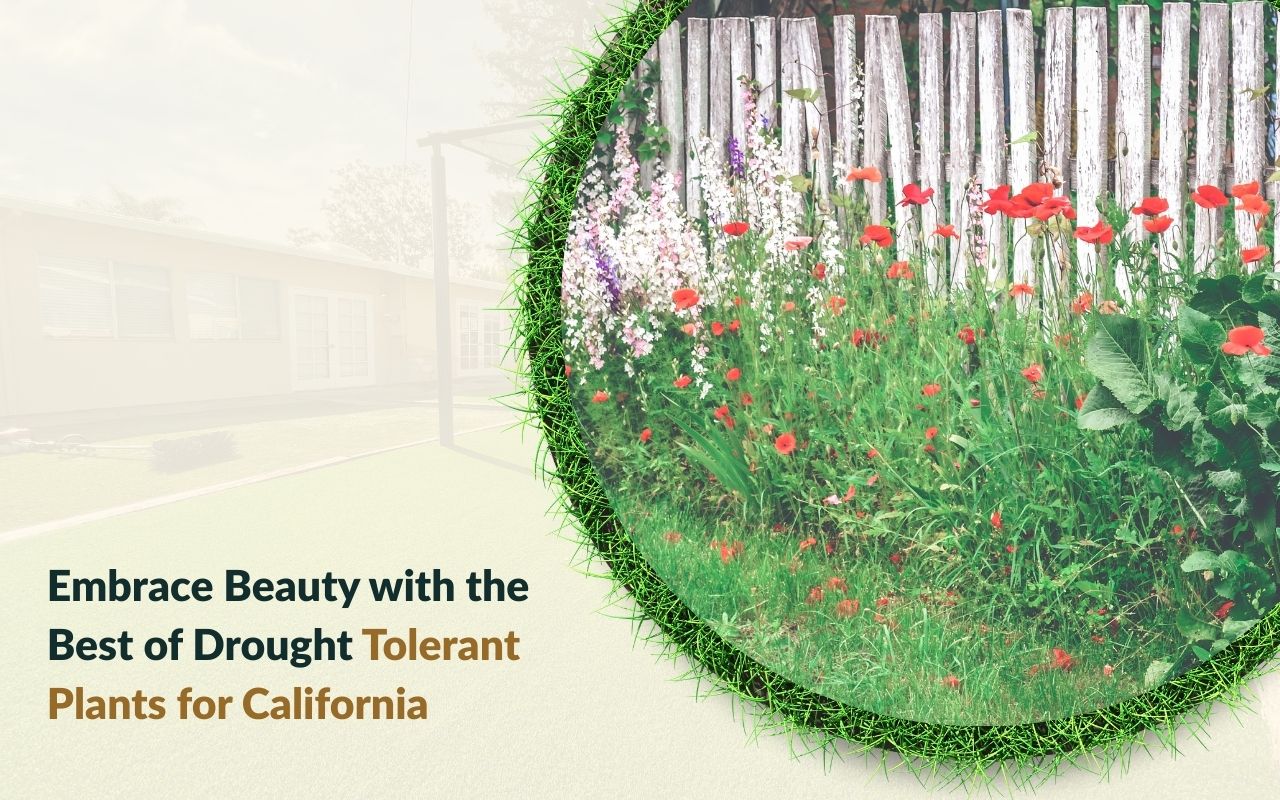
In the golden landscape of California, sun-drenched days are abundant, and rainfall is rare. Embracing drought-tolerant plants isn’t just eco-friendly—it’s an art.
As water conservation becomes critical, transforming your garden into a vibrant oasis while lowering maintenance costs may seem daunting.
But fear not; the solution lies in resilient, stunning plant specimens. These hardy plants thrive in arid conditions and symbolize grace under pressure.
Imagine a garden that doesn’t demand constant watering, yet offers breathtaking colors and textures. With the right drought tolerant plants for california, this vision can become reality.
From delicate California poppies to architectural agaves, these plants provide a diverse palette for gardeners seeking sustainable, low-maintenance beauty.
Delve deeper into our guide, and discover how to enjoy a flourishing landscape aligned with California’s unique climate challenges.
Understanding Drought Tolerant Plants
- Lavender (Lavandula): Known for fragrant blooms and gray-green foliage. Thrives in full sun and well-drained soil.
- Succulents (Echeveria, Sedum, Aloe): Store water in leaves and come in diverse shapes and colors.
- California Poppy (Eschscholzia californica): The state flower brings vibrant orange to dry landscapes and self-seeds easily.
- Manzanita (Arctostaphylos): Native shrub with attractive bark and urn-shaped flowers. Adapts well to low-water conditions.
- Agave (Agave Americana): Striking rosette shape adds drama to xeriscape gardens and requires minimal maintenance.
- Penstemon (Penstemon spp.): Tubular flowers in pink, purple, and red. Drought-tolerant once roots are established.
When selecting drought tolerant plants for california, consider sunlight, soil, and water availability. Choosing adapted species ensures sustainable, low-maintenance landscapes.
Benefits of Drought Tolerant Plants in California
Incorporating these plants reduces water bills and supports regional conservation by requiring less irrigation than traditional lawns.
They are hearty and resilient, resisting pests and diseases, lowering pesticide usage, and further cutting landscape maintenance costs.
Moreover, native species provide habitat for pollinators like bees, butterflies, and hummingbirds.
Reduced chemical fertilizers and watering prevent nutrient runoff and soil erosion. Diverse textures, colors, and forms enable striking designs harmonious with California’s beauty.
Selecting the Ideal Location for Drought Tolerant Plants
Observe sun exposure: most thrive in full sun, while some benefit from light afternoon shade.
Soil type matters. Poor, rocky soils are tolerated, but well-draining loams perform best. Amend clay with grit or organic matter.
Group plants with similar water needs. Pay attention to microclimates; south- and west-facing slopes are hotter and drier than north-facing areas.
By matching plant preferences to these conditions, you encourage robust growth and reduce supplemental watering.
Top Drought Tolerant Trees for California Landscapes
Selecting the right drought-tolerant trees ensures sustainability and lowers maintenance costs. Top choices include California oak, coast redwood, and Western redbud.
These trees thrive in California’s climate, requiring minimal water once established, creating a visually stunning, eco-friendly landscape.
Colorful Perennials for a Vibrant Drought Tolerant Garden
Enhance your garden with colorful perennials that thrive in drought-prone areas. Choose hardy varieties to reduce water use and care.
With drought tolerant plants for california, lower your maintenance costs by selecting Lavenders, Sages, and Blanket Flowers for vivid hues.
Say goodbye to high water bills and hello to a sustainable garden that exudes beauty year-round.
Succulents: The Versatile Stars of Drought Tolerant Landscaping
Succulents are versatile stars in drought-tolerant landscaping. They require minimal water while offering stunning colors and textures.
Incorporating succulents reduces maintenance costs. They store water in leaves, making them ideal for dry climates.
Combine shapes and sizes to design a low-maintenance, visually striking outdoor space flourishing under harsh conditions.
Maintenance Tips for Drought Tolerant Plants
- Proper Irrigation Zoning: Implement drip irrigation or soaker hoses for targeted watering, preventing overwatering.
- Mulching for Moisture Retention: Mulch retains soil moisture, suppresses weeds, and moderates temperature. Keep mulch a few inches from stems.
- Regular Monitoring: Inspect for pests and diseases. Early detection preserves plant health and prevents widespread damage.
Companion Planting for Drought Tolerant Gardens
Strategic companion planting enhances biodiversity, soil health, and visual appeal. Pair plants with similar light and water requirements.
For example, combine sages, lavenders, and California poppies in sunny, well-drained beds for cohesive palettes.
Interplant succulents with low-growing perennials like yarrow and rosemary to create layered textures and heights.
Native grasses provide contrast and movement. Use groundcovers like creeping thyme to fill gaps and add seasonal flower carpets.
Landscaping Ideas and Design Tips for Drought Tolerant Beauty
Drought tolerant landscapes can be formal or wild. Arrange contrasting textures on beds of decomposed granite or pebbles.
Incorporate sculptural elements, boulders, or steel planters. Weave perennials among native shrubs for relaxed cottage-style gardens.
Paths and patios with permeable materials allow rainwater infiltration. Use dry creek beds or rock channels to guide sightlines.
Shaded seating areas under palo verde or olive trees offer respite. Lighting uplights key specimens to extend garden enjoyment into evening.
